Upper Hutt manufacturer investing in the future




What started as a small operation out of a shipping container up the back of Kiwi Point Quarry in Ngauranga Gorge, Wellington, has turned into quite the success story for manufacturer Real Steel.

Fast forward twenty years later, the company employs more than 100 people and proudly operates out of a 8500 square metre factory site in Upper Hutt.
The manufacturing business imports steel out of Sweden and other countries to make steel parts for road transport, forestry, and recycling industries. It also produces a lot of steel for building truck trailers, wear parts, and materials for processing machines. This growth experienced by the company, a family run business, comes down to high employee satisfaction, innovation, and quality service for the customers it serves nationwide, according to owner and Managing Director Luke Mathieson.
“We’ve put a lot of effort into focusing on our systems,
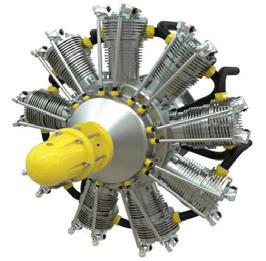

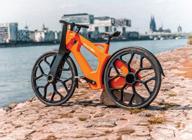
the traceability of our parts and the way we work with our customers because at the end of the day it all boils down to getting parts out to the customer on time, and being a good, solid trusted supplier.”
Real Steel’s efforts were recognised recently at the Wellington Regional Business Awards where they were presented with the Hall of Fame Award, a unique award which recognises and celebrates those enduring businesses that have made significant contributions to the economic and social fabric of Hutt Valley.
The awards are given to business who have consistently exhibited excellence in a resilient and sustainable manner over a proven length of time.


SMART MANUFACTURING Is digital the way to world class? ANALYSIS A Year In Review for HERA. INNOVATORS 2022 Seven good news sustainability stories in manufacturing www.nzmanufacturer.co.nz December 2022 Sales and training—Aust/NZ Region enquiries@baycad.biz - www.baycad.biz 0274847464 Don’t delay, contact us now. 15 day free trial available Alibre Design Version 24 Pro From NZ$1595.0 Exp From NZ$3067.0 Atom3D NZ$414.00 Prices ex GST New features Improved performance Easy to learn and use Designed for businesses of all sizes needing CAD producvity. Free on-line training Buy it—own it Does not use cloud Oponal annual maintenance 11 14 17
continued
Page
- Rebecca Reed
on
22


www.nzmanufacturer.co.nz For a copy of the NZ Manufacturer Media Kit 2023 email publisher@xtra.co.nz
2023 Media Kit
LEAD
Upper Hutt manufacturer investing in the future.
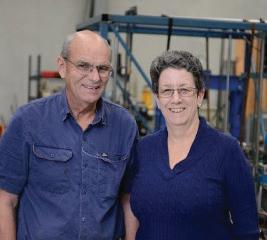


BUSINESS NEWS
Mid-market businesses strong in face of economic downturn.
SMART MANUFACTURING

Hexagon and Stratasys unlock 3D printed PEKK’S potential.


Lack of sustainability benchmarks frustrate business leaders.
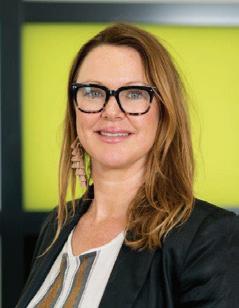

Is digital the way to world class?

Fixing farmers water woes will support reduction of agricultural emissions.

ANALYSIS
2022- A Year in Review for HERA.
INNOVATORS 2022
WORKSHOP TOOLS
Lots of performance for little space.
Blaser examines every chip in detail.
BUY NZ
Drying to be the best.
BOOKS
When McKinsey Comes to Town.

The man who broke capitalism.
The Chaos Machine: How Social Media Rewired Our Minds and Our World.
THE CIRCULAR ECONOMY

CTI tool measures circular performance.
THE LAST WORD
Manufacturers use SD-WAN to find their feet on Industry 4.0.
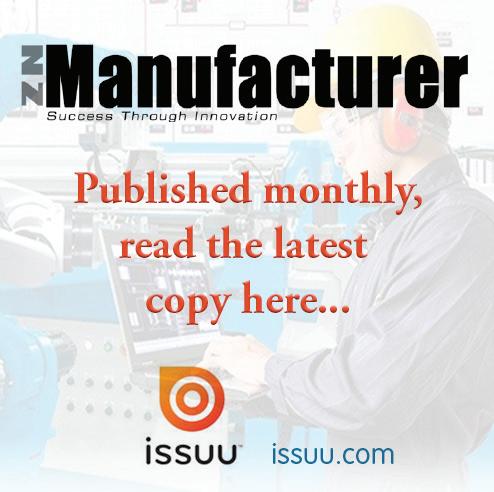

NZ Manufacturer December 2022 / www.nzmanufacturer.co.nz 4 Contents
ADVISORS
Kirk Hope Is Chief Executive of BusinessNZ, New Zealand’s largest business advocacy body He has held a range of senior positions at Westpac and is a barrister and solicitor
Brett O’Riley
EMA chief executive Brett O’Riley has a background in technology and economic development. Brett actually grew up with manufacturing, in the family business, Biggins & Co.
He currently holds board roles with Wine Grenade and Dotterel Technologies and is also on the NZ Film Commission board.
Ian Walsh
Ian is Managing Director of Intent Group, a master black belt improvement specialist and global lean practitioner. He is passionate about improving productivity and helping to create world class New Zealand businesses.
Lewis Woodward
Is Managing Director of Connection Technologies Ltd, Wellington and is passionate about industry supporting NZ based companies, which in turn builds local expertise and knowledge, and provides education and employment for future generations.
1 6 7 14 17 23 25 26 27 28
7 9 10 14 17 25 27
Dr Barbara Nebel CEO thinkstep-anz Barbara’s passion is to enable organisations to succeed sustainably. She describes her job as a ‘translator’ – translating sustainability into language that businesses can act on.
DEPARTMENTS
26
PUBLISHER
Media Hawke’s Bay Ltd, 121 Russell Street North, Hastings, New Zealand 4122.
MANAGING EDITOR
Doug Green
T: +64 6 870 9029
E: publisher@xtra.co.nz
CONTRIBUTORS
Holly

In 2023, keep your eye on the ball
2022, like other years, had its challenges for business. And with inflation raising its head further, some of 2023 may be cause for anxiety…as well, there will be an election. (Hope doesn’t need to fade, just vote the right way!)
However, if we keep our eye on the ball and don’t listen to the spin that will ultimately come our way, we will be fine. Too much to do without the space-filling business information from commentators with the task of keeping their ratings up!
ADVERTISING
DESIGN & PRODUCTION
:kim-jean: E: kim.alves@xtra.co.nz
WEB MASTER
Julian Goodbehere
E: julian@isystems.co.nz
PUBLISHING SERVICES
On-Line Publisher Media Hawke’s Bay Ltd

DIGITAL SUBSCRIPTIONS
E: publisher@xtra.co.nz
Free of Charge.
MEDIA HAWKES BAY LTD
T: +64 6 870 9029
E: publisher@xtra.co.nz 121 Russell Street North, Hastings NZ Manufacturer ISSN 1179-4992
Vol.13 No.11 December 2022
There has been quite a bit to celebrate this year and some of this can be read about in Innovators 2022 where we focus on interesting people doing interesting things.
This year, we had a strong concentration on areas such as the circular economy that currently has business looking at refining environmental and wasteful parts of their business.
Industry 4.0 is taking us on a journey to be smarter, enhance productivity and efficiencies by utilising the best in technology to achieve desirable aims.
To be smarter in our day-by-day business dealings, by being responsible for what we develop, and looking after our staff well.
In 2023 – just around the corner – we will continue to provide your company with the manufacturing information that matters. We will be on top of it.
As always, your company is invited to contribute thought pieces, profiles and describe your aspirational journey with readers who are going down the same path as you – who also share their stories of success along the way.
If you are having a holiday, may it be peaceful with the company of family and friends. If you are not, preferring to work through on your ‘hobby’ (not a job) enjoy yourselves.
See you in February.
Copyright: NZ Manufacturer is copyright and may not be reproduced in whole or in part without the written permission of the publisher. Neither editorial opinions expressed, nor facts stated in the advertisements, are necessarily agreed to by the editor or publisher of NZ Manufacturer and, whilst all efforts are made to ensure accuracy, no responsibility will be taken by the publishers for inaccurate information, or for any consequences of reliance on this information. NZ Manufacturer welcomes your contributions which may not necessarily be used because of the philosophy of the publication.
Success Through Innovation

5 www.nzmanufacturer.co.nz / NZ Manufacturer December 2022
Green, HERA, EMA
Business East Tamaki
Mumin
Dr. Troy Coyle,
Bhat Ian Walsh, Rebecca Reed Dr. Barbara Nebel, Louise Nash Oshadha Ranaweera
T: + 64 6 870 9029 E: publisher@xtra.co.nz
Doug Green
Despite a range of ongoing economic challenges hammering local businesses, new insights show that New Zealand’s mid-market enterprises continue to demonstrate resilience, with many reporting strong performances and profitability over the past 12 months.
According to the latest MYOB Mid-market Snapshot – a survey of more than 500 local mid-sized business leaders and decision-makers – more than two-thirds (69%) of those polled describe their overall business performance to date in 2022 as ‘better than expected’, with over a third (36%) saying it is ‘much better than expected’.
In a stark contrast to what has been reported amongst New Zealand’s small businesses, returns for mid-market businesses with between 20-500 employees, have been stronger this year.
At the time of polling, more than two-thirds (69%) said they have experienced an increase in revenue in the calendar year to date (compared with this time in 2021), while 63% have seen their profitability increase this year. Just 18% report a year-on-year fall in revenue, while 23% have seen a decrease in profitability over the year compared to 2021.
Looking at which sectors have fared the best so far, the highest proportion of mid-sized businesses reporting revenue increases were in the business, property and professional services industry (77%), construction and trades (75%), and the manufacturing and wholesale industry (72%).
MYOB spokesperson - Jo Tozer, explains that while the local mid-market often flies under the radar
because of the size of the sector compared to others, strong performances from mid-sized businesses and their contribution to the economy should be commended.
“From our latest insights and conversations with our customers, it’s evident that many mid-market businesses have proven to be incredibly resilient, despite the enormous disruptions and challenges that have been felt across the economy this year,” says Jo.
“In comparison to our recent snapshots of smaller businesses, where revenue and confidence have been consistently down, the mid-market entered this year with higher levels of confidence and work in the pipeline, and we’ve seen this promising outlook continue throughout the year.
“There are more than 13,000 mid-sized businesses in New Zealand and the continued success of this sector is extremely important - particularly given their growth ambitions and employing power as we head into another challenging year.”

Inflation piling on the pressure
Despite efforts to bring inflation under control, more than three quarters (78%) of mid-market business leaders say they plan to increase prices in the short term (the next 3 - 6 months).
The key reasons* for their decision to increase prices include:
*Option to select more than one reason
1. Increasing production costs (goods, raw materials etc) – 58%
2. Increasing supply costs (freight, shipping etc) – 41%
3. Increasing operational costs – 40%

4. Skills shortage putting pressure on wages and salaries – 39%
5. Increase in minimum wage – 36%
“Unfortunately, the mid-market is not immune to inflationary pressure, and most are looking to increase their prices in the near term to offset rising costs of production, supply, and operations,” says Jo Tozer.
“This is going to continue to have an impact on local consumers. For example, with 89% of mid-sized businesses operating in the construction and trades sector planning to increase prices in the near term, homeowners are likely to see added expense. The cost of locally made goods may also continue to increase, with 85% of mid-market manufacturing and wholesale businesses planning price rises.”

NZ Manufacturer December 2022 / www.nzmanufacturer.co.nz 6 Business News
businesses
DEUTSCH HD30 & HDP20 CONNECTOR SERIES Designed specifically for the truck, bus, and off-highway industry, heavy duty, environmentally sealed, multipin circular connectors. contact sizes 4 through 20. Tel: 04 566 5345 Email: sales@connectors.co.nz Web: www.connectors.co.nz
The highest proportion of mid-sized businesses reporting revenue increases included manufacturing (72%).
Mid-market
strong in face of economic downturn
Hexagon and Stratasys unlock 3D-printed PEKK’s potential
Hexagon’s Manufacturing Intelligence division and Stratasys, a leader in polymer 3D printing solutions, have applied Hexagon’s simulation technology to capture the behaviour of Stratasys’ high-performance, ultra-lightweight Antero reinforced polyetherketoneketone (PEKK) materials and its additive manufacturing processes.
These rigorously validated simulations offer Stratasys customers unique insight so they can lightweight components and introduce new sustainable aircraft and spacecraft faster.
3D printed plastic parts offer transformative lightweighting for aerospace, reducing the energy use and increasing the range of new aircraft. When the material and processes are fully exploited by product designers, it may also reduce the cost caused by overengineering and the waste and lead times of traditional manufacturing.
However, the adoption of plastics and additive methods for structural components has remained slow due to the industry’s safety-critical nature and regulations. Providing engineering teams the simulation tools to validate that these materials will achieve the required part performance when manufactured is the “missing link”, enabling designers to apply these breakthroughs today.
Rigorously-validated multi-scale models of these new high-performance aerospace-approved materials — Stratasys Antero 840CN03 and Antero 800NA — have now been added to Hexagon’s Digimat materials exchange ecosystem, with associated print process parameters from Stratasys’ aerospace-ready 3D printers.
Using these detailed proprietary models, engineers can create digital twins that accurately predict how parts printed with the chosen material and approved aerospace-ready Stratasys printer will perform in a digital reality with real-world use cases and certification tests before any physical prototypes are manufactured.
Developed to be open, Digimat software gives manufacturers the ability to design lighter parts that can match metals in performance and avoid costly overengineering using their preferred finite element analysis (FEA) and computer-aided engineering (CAE) tools.
Moreover, companies that use Digimat in conjunction with Hexagon’s MSC Nastran and MSC Apex will accelerate the certification and documentation of their work.
The Antero materials are already being used at the cutting edge of aerospace engineering, bringing major innovations to reality on time, such as Lockheed Martin using Antero 840CN03 to create NASA’s Orion spacecraft docking hatch cover.
By making rigorous digital engineering and virtual manufacturing possible with these new simulation tools, more product development teams can apply and de-risk Stratasys’ aerospace additive manufacturing solutions.
Through the partnership between Stratasys and Hexagon, which has spanned more than a decade, several high-performance thermoplastic materials — including Ultem 9085, Ultem 9085 CG, Ultem 1010, and Nylon12CF — have been characterised and added to Hexagon’s Digimat material modelling

software.
The Antero 840CN03 material is a PEKK-based thermoplastic for Fused Deposition Modelling (FDM) additive manufacturing that combines the physical and mechanical qualities of PEKK with carbon nanotubes for consistent electrostatic dissipative (ESD) properties. The high-performance polymer exhibits exceptional chemical and wear resistance, ultra-low outgassing properties.
The Antero 800NA material is a PEKK-based FDM thermoplastic with mechanical properties that include high strength, high heat resistance, toughness, and wear-resistance. These qualities make it a lighter alternative to aluminium and steel in certain use cases. Chemical resistance and minimal outgassing provide suitability for aerospace applications where prototypes and parts are exposed to jet fuel, oil, and hydraulic fluid.

Other uses include industrial applications where high strength and chemical resistance are needed.

This pie-shaped component is part of the hatch cover assembly for NASA’s Orion spacecraft. It was 3D printed using Stratasys Antero 840CN03, a PEKK-based thermoplastic with low outgassing and consistent electrostatic dissipative (ESD) properties.
Antero 840CN03 gives manufacturers a high-performance, ESD-compliant 3D printing material that meets demanding applications such as space flight. Credit: Image of Lockheed-Martin Orion hatch covers, courtesy of Stratasys Inc.
7 www.nzmanufacturer.co.nz / NZ Manufacturer December 2022
is here to make it easier to do business; working alongside business leaders and property owners in the region on security, advocacy, development and growth. businessET.org.nz Helping build sustainable business, and sustained success.
ADVISORS

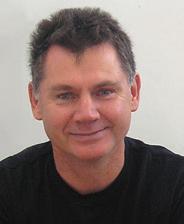

Sandra Lukey

NZ Manufacturer December 2022 / www.nzmanufacturer.co.nz 8
Sandra Lukey is the founder of Shine Group, a consultancy that helps science and technology companies accelerate growth. She is a keen observer of the tech sector and how new developments create opportunity for future business. She has over 20 years’ experience working with companies to boost profile and build influential connections.
Mike Shatford
is an expert in the field of technology development and commercialisation. His company Design Energy Limited has completed over 100 significant projects in this vein by consulting for and partnering with some of New Zealand’s leading producers.
Among Mike and his team’s strengths are industrial robotics and automated production where the company puts much of its focus.
Sean O’Sullivan Has a B Com (Hons) Otago University. In 2000 - 2001 introduced PCs on the workshop floor and job and staff tracking and a productivity software App to Fletcher Aluminium Group and 100 manufacturers NZ nationwide.
In 2001 – 2022 Founding Director Empower Workshop Productivity & Scheduling Software App. 236 manufacturing and engineering clients mainly throughout NZ and Australia, also UK and US.
Lack of sustainability benchmarks frustrate business leaders
A new research report analysing the sustainability work, attitudes, and efforts of businesses in six major sectors shows a business community that is trying to do its best but largely lacking the guidance to convert will to action.
Though 96 percent of businesses surveyed have noticed the benefits of adopting sustainable solutions, less than a third of companies have the ability to benchmark their own sustainability performance against other comparable organisations.
Global energy and automation digital solutions provider Schneider Electric produced the New Zealand Business Sustainability Research Index with Perceptive, which interviewed 300 New Zealand business decision-makers in operations, finance, technology, and sustainability in organisations ranging from two to over 100 employees.

Leaders were canvassed in the retail, construction, telecommunications and technology, manufacturing, professional services, and electricity, gas, and water services sectors.
A few key barriers were identified among some of New Zealand’s top business decision makers, close to one-third (32 percent) say the biggest barrier for adopting sustainability solutions within their organisation is a lack of government incentives for sustainable technology adoption – even though exactly half of the businesses surveyed are required to report on sustainability in their business plans or stakeholder reporting among those with 50 or more employees, that figure is 58 percent.
There is also considerable variation in reporting across industries, with just 42 percent of construction businesses being required to report on sustainability, one of the lowest rates across all industries surveyed. Of those surveyed, the small to medium businesses (two to 49 employees) have the lowest uptake and sense of urgency to adopt sustainability solutions, and the lowest agreement (51 percent) that their business is on track to meet their sustainability targets.
Among businesses with 50 to 99 employees there is 76 percent agreement, and those with 100+ employees have 81 percent agreement.
Business leaders on the frontlines of change confirm that a major barrier is a lack of comparative data. Vinit Mahna Finance Manager for Spark, says “Benchmarking is a problem – there are no

benchmarks or means of comparison, so it’s hard to track progress.” And the Vineyard Manager at a large corporate wine company , says, “We don’t have a true baseline that we are comparing ourselves against. Another sustainability barrier is people – changing their mindsets. It is now part of performance reviews.”
Mumin Bhat, the National Business Development Manager for Ecostruxure Power at Schneider Electric, says, “The research identifies benchmarking as a common hurdle, and the main sustainability benchmark systems of Green Star Rating and NABERS NZ have high awareness among businesses, but unfortunately the accessibility isn’t there yet. “Businesses perceive the barrier to entry as too high, and they get scared away before starting. But, there is an easy way to make a start – what all businesses can do now is look at incorporating power and energy meters with software for power monitoring and energy management. What this does, is it allows a business to have an instant view of where the major energy loads are and where they can create immediate efficiencies and direct investment into the right areas.
“When it comes to incentivising and implementing change towards sustainability objectives, business leaders can’t just want to do it for ROI – they have to do it for their own morals and conscience, but this is harder when businesses are struggling to measure ROI against sustainability metrics. A monitoring system gives business leaders control.”
Tim Burrows, CSQ & HSE Business Lead NZ at Schneider Electric, says the research reveals a conundrum, with widespread understanding of the critical nature of sustainability initiatives, but a number of hurdles around benchmarking performance and relevant incentives.
“The research paints a picture of the business community at crossroads. There is near-universal recognition of the need to tackle climate change, and clear KPIs and initiatives in place for most New Zealand businesses. However, when we look at the actions being taken, many businesses are not doing
the basics. There is a large disconnect between how well businesses perceive they are doing versus what actions they are actually taking.
“The research finds large organisations tend to be further along on their decarbonisation journey thanks to additional disclosure requirements, increased shareholder and employee expectations, and access to greater resources and/or expertise to develop their sustainability targets and roadmap. There are a variety of different reporting measures seen, with the top two being general impact or CSR reports and data from business use. However, these levels are still relevantly low and reporting types do not appear to be advanced at this stage.”
The research also identified some key distinctions relating to business size. Large and small businesses are more likely to say that a lack of government incentives is a barrier preventing them from adopting sustainability technology.
Medium-sized businesses, on the other hand, struggle most with the lack of buy-in from employees and a lack of dedicated personnel and training to drive adoption internally. And these businesses are more likely to mention a lack of financial resources to invest in sustainable technology, along with a need to prove ROI to business stakeholders.
Those surveyed in the Manufacturing sector were more likely to say they experienced the following benefits from adopting sustainable solutions: increased efficiency/productivity (53%), creating a positive social impact (44%) and saying it aids their environmental and sustainability accreditation (41%).
The biggest barrier to adopting sustainable solutions among this cohort is a lack of financial resources to invest in sustainable technology (42%).
9 www.nzmanufacturer.co.nz / NZ Manufacturer December 2022
Mumin Bhat.
Fixing farmers water woes will support reduction of agricultural emissions
- Jase Keen, Senior Sales Engineer - Water Utility & Country Director, New Zealand, Grundfos Grundfos is supporting the agricultural industry with reducing its carbon footprint by providing farmers with tools and technology to reduce unnecessary water use along with encouraging energy efficiency through solar pump solutions.
Worn or improperly sized pumps and fittings can also cause irrigation systems to use up more energy than necessary, for example, it is estimated that 26% of stock drinking water is lost as leakage.
There is a growing need for intelligent technologies that reduce water usage and energy consumption, manage the water source, and make irrigation more efficient across the board.

What is the bigger picture?
Why are agricultural emissions such a problem?
Agricultural emissions are an ongoing problem because they directly impact the environment and global warming. As global temperatures rise, New Zealand will continue to be divided by weather extremes – rain battering the west and south, and high temperatures bringing drought and fires to the north.
The country’s water supply and quality are also at risk of deterioration due to the growth of polluting activities.




Currently, 50 per cent of New Zealand’s gross emissions are made up of agricultural emissions, and although methane emissions from livestock make up the largest portion, this is not the only source. There are other energy intensive practices on farms that are contributing to the mix.
For example, the amount of water used, and the energy needed to run irrigation pumps are among some of the most significant expenditures in agriculture.
Agricultural irrigation is an intensive operation – lifting and moving water around farms with pumping systems consumes plenty of energy, and many existing water pumps rely on fossil fuel to power their systems.
Supporting the reduction of emissions over the long term requires the agricultural sector to have the right tools and technologies to enable change. Without optimising systems on farms, there will be more pressure on our resources that are already stressed today.
The demand on water resources will continue to grow as weather extremes affect the country and demand for food and produce increases. Irrigators are now even more obligated to improve resource efficiency and strive towards the environmental standards expected.
As the agricultural industry moves toward more automated and precise irrigation, solution providers must innovate to meet the needs of modern and high-potential farmers. By doing so, farmers can focus their time and energy on other areas of their farms that will help to drive efficiency and productivity.
Explain the role of technology in assisting with this Increasingly, smart agricultural solutions aim to optimize productivity and meet the key challenges that farmers face. The increased use of Internet of Things (IoT) is projected to increase production rates for farmers by 70% by the end of 2050 ; farmers are turning to smart technological devices to optimise their operations and to keep up.
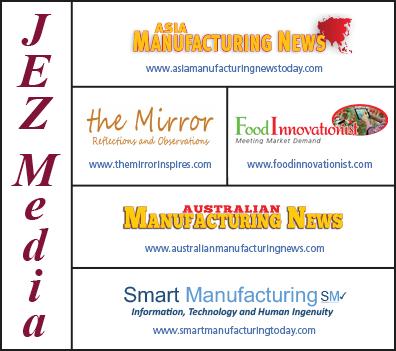
Technology such as solar powered pumping systems present a cost effective, flexible and secure water supply solution using clean energy. Utilizing solar power not only cuts emissions to zero but saves on the costs of energy infrastructure.


IoT devices such as soil moisture sensors have also allowed farmers to access more accurate and granular data.

Leveraging such information along with the use of smart controllers means efficient and precise irrigation can be achieved.
How is Grundfos technology assisting the rural sector specifically?





In addition to lowering on-farm energy use and carbon emissions, Grundfos tools and pumps offer several benefits over traditional grid-based or diesel-powered pumping systems, including easy installation, low maintenance and low operating costs.
For example, Grundfos’ SQFlex Large pump provides reliable off-grid water supply for stock watering, irrigation, and agricultural water supply and transfer. The solar power solution includes a built-in frequency converter which ensures compatibility to power from any source, as the motor runs on both AC and DC from power sources such as solar panels and generators.
The Grundfos range also incorporates intelligent dry-run sensor protection – in the event the bore runs dry, the motor is protected and will stop running, restarting automatically.
Last year Grundfos also launched LC232, an industry first groundwater pump controller, that utilises smart technology to bring ease of use, monitoring capabilities and greater connectivity to farmers. The Bluetooth enabled solution allows users to monitor, control and schedule water use from their smartphone.
NZ Manufacturer December 2022 / www.nzmanufacturer.co.nz 10 text title TechRentals® is an IANZ endorsed Calibration Laboratory We offer both IANZ Endorsed and Traceable Calibrations of test and measurement equipment inluding: 0800 832 473 www.techrentals.co.nz
title Is digital the way to world class?
-Ian Walsh, Partner, Argon & Co
text
I am pleased to say that over the last couple of years there has been a growing interest in the use of digital techniques and tools in NZ. However, it is imperative that we build this understanding rapidly so good decisions can be made. The potential to improve productivity in NZ is enormous and the early adopters of the right digital technologies will be the big winners.
There’s been a lot of confusion regarding the terminologies and descriptions that come with digital adaptation. Industry 4.0, Lean 2.0, Internet of Things (IoT) and suchlike being used to describe it, and with all this jargon it’s no wonder that a lot of decision makers are scratching their heads. But the questions they are asking are quite simple: What is it? What does it do? How will that help my business? What does it cost? How hard is it to implement and maintain? These actually are the same questions most businesses would ask about any initiative or capital purchase.
As with many shiny toys to ‘upgrade’ our businesses we sometimes get lost in the features rather than the benefits. Being able to collect data in real time might be cool, but if it does nothing other than add cost to your bottom line then it is also waste! We’ve all heard a story of excessive spend on IT with little to show for it. Hence why the uptake has been so slow, with business owners wanting to understand the benefit before committing any capital. The fundamentals are still the same. Having good continuous improvement framework, process understanding and business structures are the cornerstones of a successful digital journey. As with
more traditional Lean methods you must understand the customer and the value they will pay for then align your initiatives with delivering that value faster, at a lower cost and more reliably.

It’s then easy to determine what technologies and approaches might be best throughout your value stream and the cost/benefit equation to prioritise them, test and scale rapidly. For example we installed a process data capture system on a production line in under 2 hours, and could have extended to 20 lines in a day. 20 years ago that would have taken months and the data would have been hard to report or use. Now it comes in preconfigured graphs and templates.
But while that sounds great, if you don’t use the data to solve problems, de-bottleneck processes and drive improvement, then it’s still no use.
However, it is imperative that we build this understanding rapidly so good decisions can be made. The potential to improve productivity in NZ is enormous and the early adopters of the right digital technologies will be the big winners. [As a business manager, you will have to take charge of that journey yourself because even though we know there are benefits there is not much Government support in NZ with only $20m in the budget for the next 4 years to fund digital technology growth. That will hopefully change in early 2023 as the drafted Digital Technologies Industry Transformation Plan is finalised.]
So here is the high level approach for a digital continuous improvement journey:
1. Assess your process maturity (do you have good
process maps, management structures and CI framework in place?)
2. Have you done customer research on value as perceived by customers (why do they choose you versus your competitors, what do you do better? Think about why most people fly Air NZ on main routes)
3. Develop a value stream map and identify the constraints/bottlenecks/problem areas
4. Review (ideally with a digital business partner) what technologies will help (artificial intelligence, machine learning, process automation, data capture automation) etc
5. Build a cost/benefit analysis for each of these
6. Build a timeline, resource, budget for each of the viable ones
7. Prioritise the initiatives
8. Engage a business partner to help and review funding options
9. Start
10.Check and adjust (as with any CI program plan, do, check and adjust as per my last article)
The best time to start this journey is now, even if you need to do some groundwork, as the gains can be very significant and in our now labour-constrained environment, improving productivity is a must for any business owner.
Argon and Co, is in Gartner’s top 2 digital consultancies globally. Want to know more, drop an email to scott.adams@argonandco.com or mobile 021 389 426
11 www.nzmanufacturer.co.nz / NZ Manufacturer December 2022
HEADING SMART FACTORY SHOWCASE
Featuring
The Smart Factory Showcase
Transform your business
Understand how Industry 4.0 can transform a business and see first-hand what a high level of maturity in Industry 4.0 technologies looks like, based on a real ‘smart factory’ in New Zealand.
The sessions Get started
Your chance to experience the future of advanced manufacturing by immersing yourself in the Smart Factory Showcase. Our aim is that you will leave the showcase feeling inspired by the solutions offered and armed with the knowledge needed to kick-start your own Industry 4.0 journey
Feature a digital twin of Nautech Electronics’ Auckland facility which enables us to deliver real content and stories directly to you. The interactive session examines how Nautech integrated smart technology to enhance efficiency, connectivity, and processes. They also highlight how you can engage and improve employee experiences and enhance manufacturing agility.

text
NZ Manufacturer December 2022 / www.nzmanufacturer.co.nz 12
title
Questions or feedback? Please
contact - manufacturing@ema.co.nz
DELIVERY PARTNER PROGRAMME PARTNERS POWERED BY
www.industry4.govt.nz/UpcomingEvents
Register here
NETWORK SITE VISITS
The Network Site Visits is a programme to encourage sharing of Industry 4.0 knowledge across the sector. Whether you are well into your Industry 4.0 journey or just starting out, the programme provides a range of opportunities to expand your understanding of Industry 4.0 technologies and learn from others who have already embarked on their Industry 4.0 journey. Join us for events, undertake an assessment or expand your knowledge through resources and case studies.
eadiness Assessment
Companies can apply for a fully funded Smart Industry Readiness Index (SIRI) Assessment process to help accelerate their own journey towards Industry 4.0, the result of which will be a benchmark against other companies in their sector and a high level prioritisation roadmap.
Apply for the assessment
Factory Tour Webinars



The tours provide an opportunity to see first-hand what businesses have implemented as a result of the SIRI Assessment. They will showcase developments, specific technologies and learnings on their Industry 4.0 journey. Targeted at local manufacturers, these events are delivered across New Zealand and are a great way to network and connect with others in the region.
Upcoming events
The webinar series is an opportunity to hear stories from all stages of the Industry 4.0 journey, focusing on the benefits of implementing these technologies, what challenges you may need to overcome along the journey and specific examples of Industry 4.0 technologies, all based on the experience of New Zealand companies.
Upcoming events
Case Studies
Documented as part of the SIRI Assessment, the case studies provide an opportunity to understand a specific example of how Industry 4.0 technology has been implemented in a manufacturing environment. They will provide you with key learnings to take away and inform your own journey.
Resources
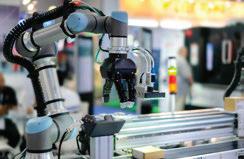
13 www.nzmanufacturer.co.nz / NZ Manufacturer December 2022
DELIVERY PARTNER PROGRAMME PARTNERS
BY
POWERED
2022- A Year in Review for HERA
-Dr Troy Coyle
2022 was possibly the most successful year for HERA in its over 40-year history.
This was certainly the case for research grant success and strengthening our research capability for the manufacturing and construction sectors.
Decarbonisation
In 2022, we at last launched our zero carbon steel program Hōtaka Whakakore Puhanga Waro (mo te Hua Rino). This program allows zero carbon steel to be specified, with credible offsets certified by Ekos.
The offsetting requirements are based on credible life cycle analysis and Environmental Product Declarations and offer additionality (i.e. they reliably lead to reduced net carbon) through nature positive offsetting via planting and regeneration of native forests that offer biodiversity and local employment benefits.
This program offers zero carbon options for most steel products used in New Zealand, including stainless steel, rebar, roofing and cladding, light gauge and structural steel. This comprehensiveness, reliability and independence makes it a first of its kind globally.
We also commenced development of Australasia’s first material passport. This work will see steel re-use at end of life be supported and we hope that once developed, this can be rolled out across many building materials.
This will make buildings become “banks of materials”, where materials can be “withdrawn” and re-used. This has obvious carbon benefits.
Manufacturing industry support
I continue to be engaged with key developments in the manufacturing sector, joining the Advisory Board for the Advanced Manufacturing Industry
Transformation Plan and co-sponsoring the Innovation and Sustainability workstreams.
I also was re-elected to the role of Co-Chair of Hanga-Aro_Rau, the Workforce Development Council for Manufacturing, Engineering and Logistics. HERA was also one of only two international partners in the newly created $260 million Australian-based Sovereign Manufacturing Automation for Composites Capability Cooperative Research Centre (SoMAC).
Leading the way for Construction 4.0

HERA was awarded $10.3 million in Endeavour funding for a four-year research program titled “Developing a Construction 4.0 transformation of Aotearoa New Zealand’s construction sector”.
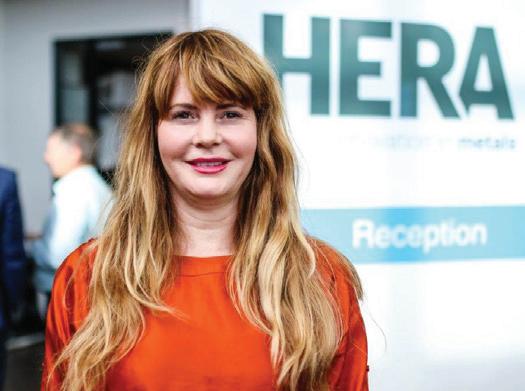
This project will use complexity science to build upon developing nascent global Construction 4.0 knowledge. The research will be world-leading in an emerging area of international interest and create data-driven decision-making for the future of construction.
It will also incorporate M tauranga M ori interfaces, making it unique globally. This is also an area where HERA has been supporting our industry to transform, with 2022 launching our development of a M tauranga M ori toolbox for our industry.
The construction 4.0 Endeavour project is a huge opportunity to create change in the sector and will include 16 PhD/Masters students involved in the
project, thus also making a significant contribution to workforce development and Maori participation.
HERA was also a partner in AUT’s successful Endeavour project titled “Sustainable earthquake resilient buildings for a better future”. The above three grant successes make it the most successful year for research grants in HERA’s history.
Design support
Along with a range of Design Guides, HERA launched its long awaited composite beam and slab design tool, to assist engineers to design to AS/ NZS 2327:2017. HERA is continuing to work on its software portfolio to support structural steel design and has committed to releasing at least two new Design Guides per annum.
HERA developed online corrosion to assist designers and engineers with durability design of steel and steel- concrete composite structures.
We also updated slab panel method (SPM) software when the copyright was transferred back to HERA. The updated SPM provides a more cost-effective, efficient and reliable technical solution and complies with the current design standard. There is an opportunity for deck manufacturers to contact us if they want to add their profile to SPM software.
HERA Innovation Centre
HERA obtained Board approval for its Innovation Centre to be a 6 star green star build. We have now registered for this certification and look forward to construction to commence in 2023.
Awards
Our GM of Fabrication 4.0, Dr Michail Karpenko, was awarded the Steel Construction NZ Chair’s Award and HERA was a finalist in the prestigious 2022 Asia-Pacific SABRE Awards in the Associations category for our work on sustainability, innovation and diversity in the steel industry.
HERA training
More than 183 professionals have attended HERA Welding Supervisor and Welding Inspector courses in 2022. New courses in welding engineering for those carrying out engineering safety inspections of cable logging yarders or for heavy vehicle specialist certification HVSC have also been developed.
NZ Manufacturer December 2022 / www.nzmanufacturer.co.nz 14
Analysis
Change your bearing now Moving energy made easy

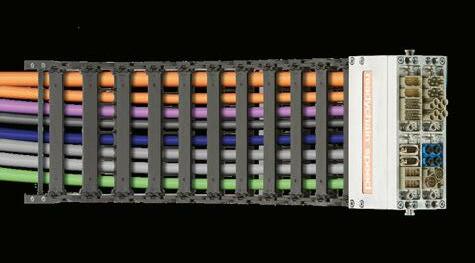
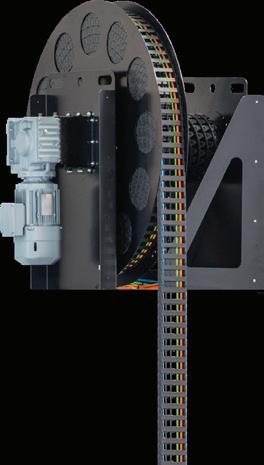
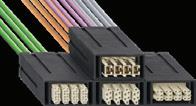
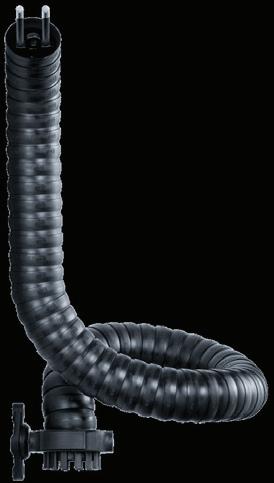




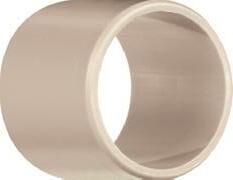
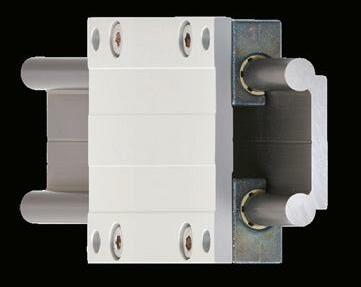


No corrosion, no additional lubrication, light weight. This is what makes our high-performance plastics special. They replace metal in plain, spherical and ball bearings, in slewing ring bearings and in linear technology. Less cost and higher service life for moving applications, proven in the igus test lab; get a competitive edge with our dry-tech® range. All motion plastics can be configured and calculated online. igus.co.nz/dry-tech




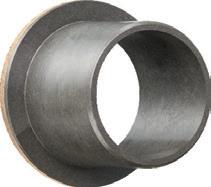


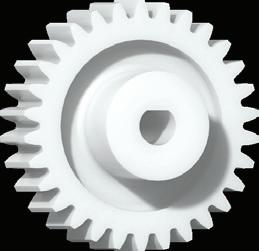
15 www.nzmanufacturer.co.nz / NZ Manufacturer December 2022
Our comprehensive range matches energy chains and cables to the movement on your
vertical, horizontal or rotary motion, as standard or as special
predictive maintenance. From individual components with
can be configured
Auckland & Hamilton | 0800 847 200 | www.treotham.co.nz | info@treotham.co.nz
leading supplier of high quality components and products to industrial markets
machine. For
solutions, with smart technology for
no minimum order quantity to harnesed, readyto-intstall systems. All motion plastics®
and calculated online. igus.co.nz/the-chain
The
INDUSTRY 4.0: REVOLUTION OR EVOLUTION?



When tackling i4.0, food manufacturing and processing industries are all on a journey of discovery.
Industry supplier NZ Controls includes itself in this bracket, describing the company as a service provider rather than a manufacturer. “We are also working out how it all fits together so that we can help our customers. We want to add value. It’s our responsibility to be informed and ready to help guide our customers into the world of Industry 4. We work hard to battle the hype and drill down into real and practical applications with measurable returns,” says Nikk King, director business development, NZ Controls. NZ controls believes that the best approach is to consider the i4.0 technologies as a set of tools and concepts to enhance what it is already doing. Thus, i4.0 is more an evolution than a
revolution. Nikk says that while the results can be revolutionary, “We don’t need to ditch everything and start again or even make significant physical changes”.
Perhaps the best way to take advantage of the i4.0 tools and techniques is to change or broaden the mindset to one of iterative and continuous improvement. While there’s nothing revolutionary there, says Nikk, NZ Control’s ability to apply emerging technologies leads to newly discovered opportunities for improvement. In some other cases, i4.0 tools may just provide the data needed to prove what you may already suspect, finally giving the justification to get those projects moving.
Another key application for the i4.0 toolkit is to allow more flexibility and potentially ‘revolutionise’ some aspects of production. For example,



evolving from a very linear and inflexible workflow to a more adaptive cell or modular approach, perhaps using collaborative robots and automated guided vehicles to move components instead of traditional conveyors filling up the floor.
“From NZ Controls perspective we must provide measurable value. We seek to collaborate on developing a measurable business case, delivering i4.0 technology solutions and help our customers realise their return on investment. In doing so, we maintain our customers’ trust and in some small way help to evolve the local manufacturing sector into one which is incrementally more productive.”
“You
NZ Manufacturer December 2022 / www.nzmanufacturer.co.nz 16
FTR502 Drive productivity with data
• Repeatable production • Traceability • Track costs and outcomes • Manage efficiency • Drive continuous improvement
Peter Drucker
Measure to gain control
can’t manage what you don’t measure”
2 MARCH 2020 INDUSTRY 4.0
INNOVATORS 2022
igus unveils the world’s first urban bike made from recycled plastic
No maintenance, no corrosion- the igus:bike sets new standards in sustainable mobility
With its expertise in plastics for movement, Treotham is making the concept and components available to all bicycle manufacturers on the new igus:bike platform.
The world is drowning in plastic waste. The huge piles in landfill sites are growing fast. Some of this plastic ends up in the ocean, enters the food chain, and becomes a danger to marine, animal and human life. Therefore it is most urgent to move away from the traditional linear economic model and migrate to a fully circular economy.
To help this transformation, igus the motion plastics specialist has been developing and investing in ideas
for recycling plastics for many years. The company recently presented a world first: The concept of a robust, durable urban bike made entirely of plastic, from frame to bearings to toothed belt.

Robots race against climate change on seafloor
New Zealand’s Antarctic scientists are racing to document life on the seafloor in the Ross Sea before ecosystems change, possibly forever, as the world warms.
Underwater robots have been deployed to conduct ‘speed sampling’, covering distances and depths that
divers can’t. The remotely-operated vehicles (ROV) collect specimens and video footage from places unexplored.

“You wouldn’t believe what’s below the ice. The amazing colour, amazing diversity and amazing abundance of life. It’s definitely way more diverse than around the New Zealand coastline,” says NIWA marine ecologist Vonda Cummings.
These seafloor communities are uniquely adapted to living in very cold but stable conditions.
“Because animals in Antarctica are living on the edge of existence, it might not take a lot of change for them to tip over and not do so well.
“The more we can do to prevent more carbon dioxide going into the atmosphere and into the ocean the better, and we should do it soon.”
State-of-the-art technology to abolish e-waste in landfills
Aotearoa’s e-waste recycling capability is to eradicate e-waste to landfill with the introduction of the first e-waste shredding and optical sorting machinery.
This kickstarts a foundational step change in the country’s recycling strategy, giving Aotearoa the potential to transition from one of the worst e-waste offenders in the developed world to global leaders.
Computer Recycling, the country’s leading electronic waste recycler specialising in technology reuse and recycling, brought the first-of-its-kind BLUBOX e-waste technology to Aotearoa. BLUBOX is a world-class waste sorting machine of which is one of only eight on the planet.
Patrick Moynahan, Computer Recycling’s Managing Director, says that the implementation of BLUBOX is an integral move forward for Aotearoa’s e-waste strategy.

“The average Kiwi produces 20kg of e-waste per year, which is one of the highest amounts per capita on Earth. On the whole that’s around 80,000 tonnes of e-waste per year,” says Patrick.
“BLUBOX technology allows Aotearoa to divert thousands of tonnes from the country’s landfills every year, with the ability to sort one tonne per hour. We’ve got shipping containers full of waste
ready to feed the machinery for months, and then it’s down to Kiwis doing the right thing and recycling their e-waste.
“We have successfully processed more than 4000 tonnes of e-waste in the past three years. The introduction of the automated processing facility, comprising a BLUBOX shredding machine plus MSS Optical Sorter, will allow us to increase processing capabilities to 2000 tonne per annum on a single shift.”
ROBOTICS INDUSTRY 4.0 AUTOMATION WORKSHOP TOOLS

Advertising Booking Deadline – 6 February 2023
Advertising Copy Deadline – 6 February 2023
Editorial Copy Deadline – 6 February 2023

Advertising – For bookings and further information contact: Doug Green, P O Box 1109, Hastings 4156, Hawke’s Bay Email: Editorial material to be sent to : Doug Green, P O Box 1109, Hastings 4156, Hawke’s Bay Email: publisher@xtra.co.nz Tel: 06 870 9029
At NZ MANUFACTURER our aim is to keep our readers up to date with the latest industry news and manufacturing advances in a tasty morsel, ensuring they do not get left behind in the highly competitive and rapidly evolving manufacturing world.
17 www.nzmanufacturer.co.nz / NZ Manufacturer December 2022
Opinion Manufacturing Profiles Letters to the Editor Politics of Manufacturing Trade Fair World Diary of Events World Market Report Q/A Export News Machine Tools Business Opportunities Commentary As I See It Business News Appointments Around New Zealand Australian Report New to the Market Lean Manufacturing Equipment for Sale Recruitment Environmental Technology Manufacturing Processes NZ MANUFACTURER FEATURES FEBRUARY 2023 Issue
www.nzmanufacturer.co.nz
Innovators 2022
A decade in the stainless tube market
New Zealand’s leading tube manufacturer is celebrating 10 years in the stainless precision tube market.
Waikato-based Industrial Tube entered the stainless market in 2013 when it purchased machinery and stock from Stainless Tube Mill.
Reflecting on the journey, Industrial Tube general manager Ian Foster says the company has made great progress and achieved a huge amount in 10 years.
“Initially, we operated the stainless mills in Auckland, and then in 2014, added a purpose-built extension for the new stainless plant to our existing facility here in Hamilton,” he says.
Throughout Industrial Tube’s journey, Foster says the team has strived for quality, and at times, have had to supply replacement products when they missed the mark.
Industrial Tube is a privately owned and operated company, founded in 1985 with its manufacturing base in Hamilton. Industrial Tube began as a manufacturer of precision carbon tube.
Adding software to hardware – A Powerful Recipe for Innovation & Growth
AoFrio is a New Zealand technology leader that few local people know about. With deep manufacturing and hardware roots, the company has decades of experience supporting food and beverage companies around the world with their refrigeration.

Now, the business has innovated beyond hardware and invented the world’s first Internet of Things (IoT) platform for commercial refrigeration.
The combinations of hardware, like motors and fans, and smart IoT-enabled refrigeration controllers and sensors help customers sell more products, save costs,
track assets, gain insights to do business better and save on energy and carbon emissions.
AoFrio is growing into a hardware-enabled, software as a service (SaaS) provider.
It’s their pathway to lifting recurring revenue (because they sell their solution ongoing to customers), to expanding in existing markets and exploring new regions around the world.
But the path to getting there has been long and not without its challenges.
Comvita’s Harmony Plan: sustainability strategy built on purpose and values
Comvita’s ambitious sustainability strategy, its Harmony Plan, is guiding the Bay of Plenty-based manufacturer to ‘leave the world in a better place’.
The global market leader in M nuka honey and bee consumer goods set out, almost 50 years ago, to work in harmony with bees and nature in New Zealand, to heal and protect the world. From the beginning, the company’s aim has been to help people feel better and live well.
The Harmony Plan – an interconnected
ecosystem
Comvita has identified where it can have the most impact and has built its sustainability plan around four cornerstones.
The company aspires to be a leader in climate action, act as kaitiaki (guardians) for bees, restore balance in nature, and invest in its people and communities.

‘The Harmony Plan reflects the commitment we hold ourselves to. To be successful, we have to deliver positive outcomes for all our stakeholders,’ says Heather
Designing a better world through smarter materials
Ben Scales is co-founder and CEO of next-gen materials start-up KiwiFibre and is studying towards a Bachelor’s degree in Industrial Product Design and Commerce at the University of Canterbury.
Ben co-founded KiwiFibre with fellow student and industrial designer William Murrell in 2020 after discovering the potential harakeke (aka New Zealand flax) has in engineering applications and the effect it could have on the fast-growing natural-fibre composites industry.
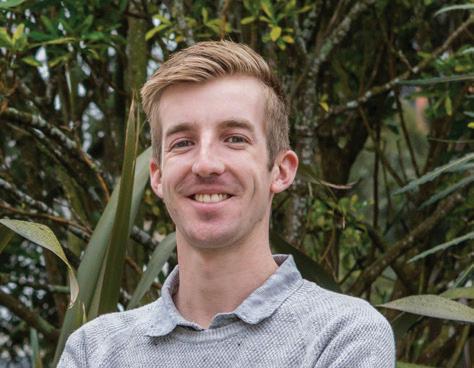
In addition, the co-founders were inspired by what the harakeke industry once was and the historical and cultural importance this taonga species has to Aotearoa.
Ben also works part-time for sustainable lifestyle fashion brand Untouched World on projects around sustainability, innovation, and design, where he’s learned what it takes for a company to make positive change in an industry that needs changing.
Additionally, Ben works with product design students, encouraging them to realise their potential as designers and explore bringing this into startup-land.
KiwiFibre develops natural-fibre composite material solutions to help global industries make
environmental and social change. The pair are solving many of the material-based product problems companies’ face while tackling the composite industry’s environmental problems.
Their first customer is a $25B NASDAQ-listed global company using KiwiFibre to replace carbon fibre and fibreglass in a range of their products.
KiwiFibre’s customers use the material for its exceptional strength to weight, energy absorption, radio transparency and sustainability - leading to better products and industry outcomes.
After building their first MVP (minimum viable product), a harakeke fibre skateboard, on a barbeque in the backyard of their student flat, they are moving on to establishing supply relationships with global customers in industries from aerospace to geospatial engineering.
KiwiFibre is raising a seed round this year as they look to grow and revolutionise industries.
Ben is a finalist in this year’s KiwiNet Awards in the category Momentum Student Entrepreneur.

NZ Manufacturer December 2022 / www.nzmanufacturer.co.nz 18
Johnston, Comvita’s Head of Safety and Sustainability.
Industrial Tube general manager Ian Foster.
Greg Balla, CEO, Aofrio.
Ben Scales
Seven good news sustainability stories in manufacturing in 2022

-Dr Barbara Nebel, thinkstep-anz
As 2022 draws to a close, it’s time to spread a little Christmas cheer. Here are seven good news stories that show the progress the manufacturing sector made this year to become more sustainable.
1. We have a national Emissions Reduction Plan
In June the government introduced New Zealand’s first Emissions Reduction Plan (ERP). The ERP sets the context for sustainability in New Zealand. It contains the strategies and policies that will make our Zero Carbon Act 2019 happen and move all industries, including manufacturing, to a low-emissions economy over the next three decades.
‘Carrots and sticks’ will encourage (and require) manufacturers to cut greenhouse gas emissions in the products they make, the heavy transport, freight, energy and buildings they use, and the waste they discard.
Our June article provides more information. NZ Manufacturer June 2022 by Media Hawkes Bay Limited - Issuu
2. Manufacturers are measuring their products’ environmental impacts
We’re encouraged to see more manufacturers, in more industries, investing in Life Cycle Assessment (LCA) for their products and packaging. LCA measures a product’s environmental footprint: from sourcing (and maybe growing) the raw materials, to making the product, to using it and disposing of it at the end of its life.
LCA can measure many impacts, including the energy and water used and the carbon released (the product’s ‘carbon footprint’).
Food manufacturer Comvita has commissioned an LCA. The company wants to understand how to reduce the carbon footprint of its honey at all stages of the product’s life cycle.
3. Manufacturers are communicating their products’ environmental impacts
The list of registered Environmental Product Declarations (EPDs) for New Zealand-made products continues to grow strongly. An EPD is a verified, publicly available document that summarises a product’s environmental footprint.
EPDs start life as LCAs. There are EPDs for many products including vehicles, building products, and food.
In 2022, EPDs registered with EPD Australasia, the International EPD® System’s regional partner, include Red Stag’s EPD for sawn and planed timber products and Red Stag Wood Solutions’ EPD for cross-laminated timber.
4. Manufacturers are tackling climate change
In the past year, food manufacturer Synlait increased the capacity of its electrode boiler at its Dunsandel site to provide more renewable process heat. It also converted a boiler from coal to biomass.
Fisher & Paykel Healthcare continued to collaborate across its supply chain to reduce its Scope 3 greenhouse gas emissions. (One source of these emissions is the goods and services a manufacturer buys.)
The manufacturer encourages suppliers to reduce emissions, ideally with a Science Based Target (SBT) that meets the goals of the Paris Agreement, an international treaty on climate change. In the 2022 financial year, 20 suppliers set SBTs or equivalent targets.
DB Breweries, Fisher & Paykel Healthcare, and Synlait became ‘early adopters’ of the national Climate Leaders Coalition’s new Statement of Ambition.
The Statement, launched in June, commits signatories to go ‘further and faster’ to reduce climate change, adapt to the impacts and move to a low-carbon economy.
5. Manufacturers are reporting on climate change risks and opportunities
Climate change has financial, physical, and economic impacts on businesses. Identifying and disclosing the risks and opportunities involved makes them easier to manage.
Reporting also promotes financial transparency and makes it easier for investors and others to hold businesses accountable for reducing emissions. Fletcher Building, Zespri and Ravensdown are three manufacturers who are reporting on their climate change risks.
6. Manufacturers are helping New Zealand ‘build greener’
Manufacturers of building and construction products are reducing ‘embodied’ carbon in their materials and products. Embodied carbon is the carbon generated to extract, transport and process the materials that make up a product, and manufacture and distribute the product itself.
Regulations and certifications are hastening the move to lower carbon products. For example, the Ministry of Business Innovation and Employment’s Building for Climate Change Programme proposes regulations to cap ‘embodied carbon’.
In 2022 the New Zealand Green Building Council (NZGBC)’s updated its Green Star certification for commercial buildings. The certification now requires the industry to reduce embodied carbon by at least 10% compared with a ‘reference’ building.
In November we released our joint thinkstep-anz / NZGBC ‘embodied carbon calculator’. This free tool
helps the industry calculate and reduce greenhouse gas emissions.
7. Manufacturers are venturing into circular economy
The approach continues to be a cautious one, with manufacturers generally focussing on entry-level circular economy activities like recycling waste.

For example, GIB® manufacturer Winstone Wallboards recycles gypsum from waste plasterboard for use in agriculture. When it opens its new plant in Tauranga in 2023, the manufacturer will recycle waste plasterboard into new plasterboard.
In the coming year, we hope to see manufacturers developing truly circular products. This will involve changing manufacturing strategies and processes to create better, longer-lasting products that reuse resources.
The benefits include reducing supply chain risks and uncovering new business opportunities such as leasing products.
We’re encouraged by what we’re seeing – and hope this momentum continues in 2023. We wish all our readers a safe, enjoyable, sustainable Christmas and New Year.
19 www.nzmanufacturer.co.nz / NZ Manufacturer December 2022 Innovators 2022
PIC CREDIT Vlad Chetan on Pexels.
Play time for edge computing is over—full scale deployments in 2023
-Jim White, CTO at IOTech
The Top 5 Edge Computing/Industrial IoT Predictions for 2023
1. Edge play time is over
Companies that are wanting to put edge/IoT solutions in place are making things clear to providers: research and play time is over.
These companies are done “trying” things. Edge solutions have to work “now,” they have to work at scale, and they have to work such that IT and OT teams can use them effectively.
Companies are growing impatient with solution providers that are not able to provide solutions that are already working at scale and immediately demonstratable.
Edge elements must be fully integrated into their choice of technology (hardware, sensors, devices, network, cloud providers, data visualisation, analytics, security, management, etc.).

Companies want edge solutions that are easily installed and even easier to own and operate.
2. OT Edge security becomes a thing
Threats at the edge are becoming more publicised and known. Companies are reading about various attacks on the edge and they are becoming educated on what they want for solutions. Requirements are becoming clearer and more specific.
Companies are no longer under the illusion that closed loop networks are truly closed, that obfuscation is good enough protection because “this stuff is complicated,” or that “no one would bother to want to get access to this type of data.”
Organisations want to know how to protect all parts of the edge solution, from sensor to cloud. They also want to know how to detect when something seamy or unexpected seems to be going on.
Progress is being made with edge/IoT security capability, but much of that is related to protecting cloud native environments and doesn’t integrate well at the edge. Edge/IoT and security industries are starting to recognise this.
3. Reinvention and disruption of hyperscalers
Cloud providers and the hyperscalers have tried to lure all that precious edge data into the cloud where AI/ML and other analytics were to operate on it. The challenge is that the vast transfer, storage, and compute charges associated with moving all that edge data to the cloud is significantly expensive. Trying to sift through all that data for nuggets of commercial value doesn’t always show an ROI – at least not yet.
Companies are beginning to wake up to this reality. Hyperscalers know how to do scale. They just need to do edge at scale and in a way that adds value and lowers cost. They can and will figure this out, but they are going to require help from organisations, people and projects that know the edge. Watch for an increase in new product announcements, new partnerships and acquisitions as the hyperscalers finally take on “edge native.”
4. Not everything requires AI/ML
AI/ML is revolutionising numerous industries and spaces. But as with any magical balm, it can be overapplied. There is a lot of edge processing going on – some of it might even require some sophisticated calculations and algorithms – but not all of it needs costly ML models and AI engines.
Simple rules engines and scripting engines can provide a lot of value at the edge – saving operational costs, improving safety and even generating new revenue. Edge solutions don’t always require advanced/complex skill sets to produce, nor do they require all sorts of compute power to operate.
There is still a lot of low hanging fruit (aka money to be found) by measuring a few edge values and automatically actuating when things get out of range. Edge solution providers that help keep it simple and harvest that fruit, might become the
new darlings of investors and companies looking to improve their company bottom lines.
5. Kubernetes still not the full answer, but…
Everyone’s edge is different, so Kubernetes can be used to deploy, orchestrate and manage containerised workloads at some edges.
But Kubernetes does not solve all the issues around management at the edge and it struggles in resource constrained environments or environments that aren’t going to support containerised workloads.
There have been and continue to be more CNCF efforts to extend cloud native – call them Kubernetes light – to the edge.
Many of these have been attempts focused on shrinking Kubernetes at the cost of functionality. microK8s, KubeEdge, K3s are all options that have been traversing this path.
There is growing recognition on the part of the CNCF community that Kubernetes-light isn’t enough. Therefore, 2023 will experience an emergence of innovative approaches and architectures to help address edge management.
Honourable Mention Predictions A. Consolidation
There are numerous edge and Industrial IoT platforms, software, tools, etc. (proprietary and open source). These have emerged over the past 5-10 years of the hype cycle associated to edge and IoT computing. The industry has reached a point (through the trough of disillusionment and onto the plain of productivity) where consolidation is inevitable.
Companies want to accelerate their edge/IoT solutions. Over the past few years, companies were buying AI/ML companies to gain control of the IP and the people in that space. They will do the same to consolidate more of their holding on the edge solution space.
B. Use Case Demand Changes
Within the industrials sectors, suppliers of solutions in the edge/IoT space have been addressing use cases for several years. Now, other verticals are starting to become important consumers of edge/IoT solutions.
Climate change, energy shortages, health and environment concerns, people / staff shortages – all areas of need stemming from immediate global economic and geopolitical circumstances – are driving more use cases.
www.thinkstep-anz.com
NZ Manufacturer December 2022 / www.nzmanufacturer.co.nz 20
Analysis
21 www.nzmanufacturer.co.nz / NZ Manufacturer December 2022 Better Business
Upper Hutt manufacturer investing in the future

Investing in innovations
With an eye to the future, Mathieson says the company has invested in several innovations including developing and building their own systems and machinery to manage the volume of parts in the factory as a result of rapid growth.
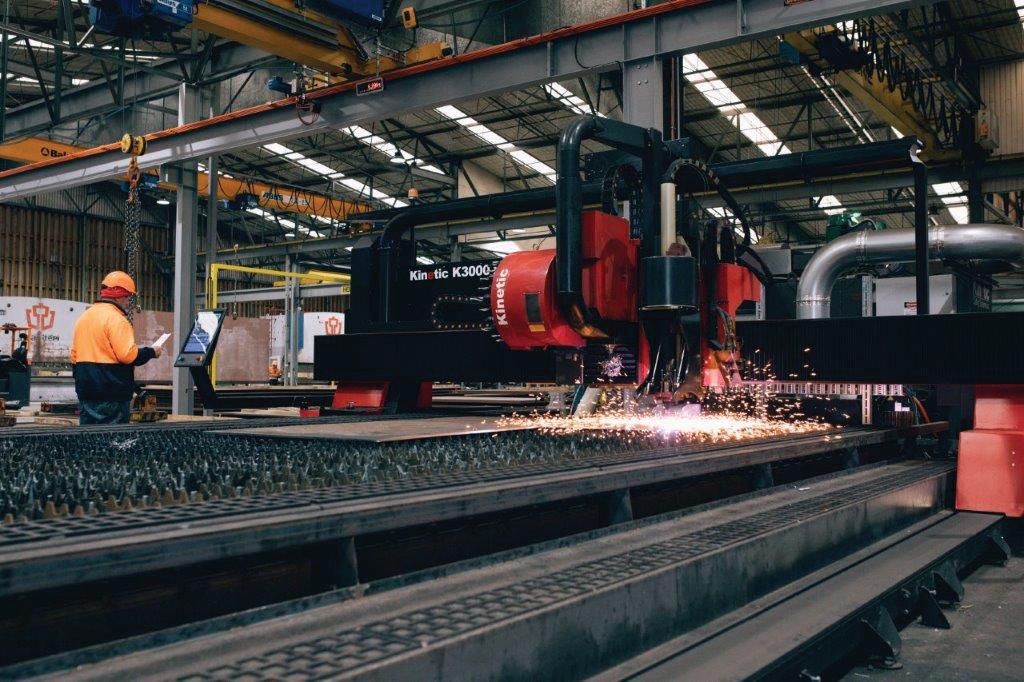
“We have thousands of parts a week moving through our factory which are all going in different directions, so part identification was a big issue for us because even though some parts are very similar, they are all unique.”
After failing to find a machine that ticked all the boxes, they decided to build one themselves with an automation engineer.
“The machine has cameras inside which scans the parts and matches them to our ERP system printing all relevant information on the part including a barcode. We can then track these parts around the factory and at dispatch using software designed inhouse run on mobile scanners. The software is aptly named “MUM” as Mum knows where everything is and is very organised.”
Mathieson says the machine, which is in the final stages of refining, has been a game charger and something the business will be able to leverage off for future growth because it gives the team the ability to track and control a high volume of parts accurately.
“It reduces the human element and makes it easier for our guys to do their job properly because we can scan the parts, see their whereabouts in the factory and we’re more confident we have it right when dispatching to our customers.
“It’s an attractive offering for our clients because it gives them certainty, we have our orders under control and of course it reduces risk.”
A Great Place to Work
Mathieson believes the company’s people determine ultimately whether they succeed or fail in business and staff retention is Real Steel is high.
“It comes down to the quality of our team, it doesn’t matter how good our machinery is, how good our product is, if you don’t have the people to make it all happen, you are never going to make it happen.”
A few years ago, the company was able to expand their premises and machinery with help from a business development grant from Upper Hutt City Council.
“Upper Hutt is a great place to run a business, there is a lot of manufacturing history out here and a good work force. There’s also a lot of growth in the region and it’s an attractive place to work and live. The grant offered by the council a few years ago definitely helped our business expand and we are grateful for their support,” says Mathieson.
When it comes to jobs, Real Steel employs a wide range
of staff from factory workers to software developers, industrial designers, engineers, and apprentices right through to experienced tradespeople.
“Aside from the fact the location is ideal for a lot of our staff who live locally, there is a good business community out here as well as lots of employment development and growth opportunities.
We outsource some of our work to local businesses which means we are close to them, and we are supplying a range of employment opportunities which can only be good for the local economy.”
Bridging the gap between young talent and the industry
As Real Steel continues to grow it is looking to invest in its future workforce, partnering up with two local high schools to give them opportunities in the industry.
“We as a reasonable size employer have a responsibility to help young people into the workforce. Currently we have employers struggling to find workers, and students unsure of their future path - we want to bridge that gap by adding value to them and potential employee opportunities for us.”
Real Steel will work with students from St Patrick’s College and Upper Hutt College through their technology NCEA Curriculum. The programme, which gets underway in February 2023, sees Real Steel work alongside the schools in delivering real world manufacturing experience to complement the curriculum.
“Our design and production teams will work alongside the students between year 11 and year 13 in delivering projects such as a tool box and custom pit bike, focussing on design for manufacture principles.”
NZ Manufacturer December 2022 / www.nzmanufacturer.co.nz 22 continued from Page 1
continued from Page 1
- Rebecca Reed
Lots of performance for little space
Save installation space and weight without sacrificing performance reliability – while entirely eliminating lubrication. That’s what the igus PRT-04 micro can do.
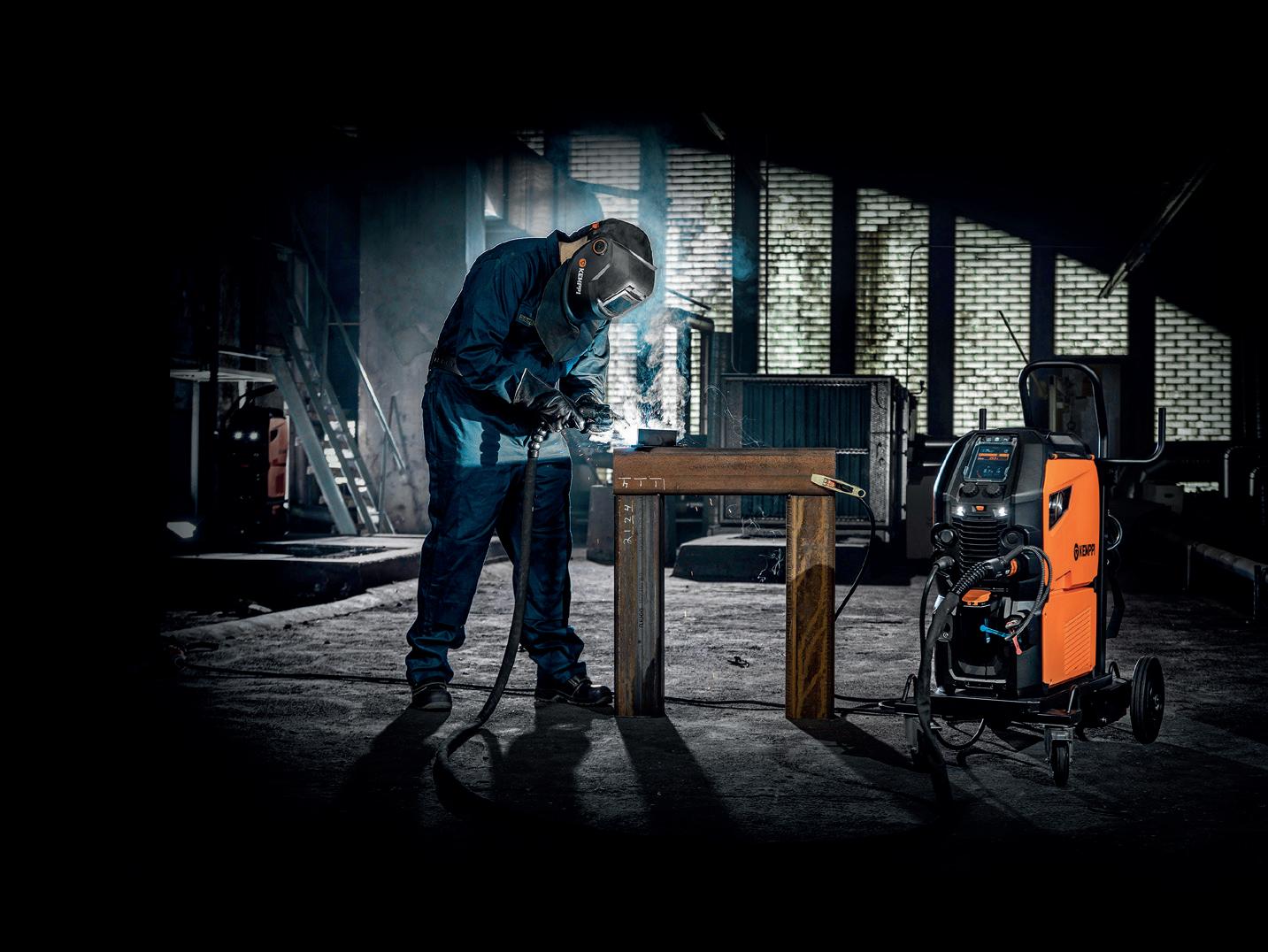
Treotham is adding a particularly small slewing ring bearing that is also robust to its product range. The PRT-04 micro has an outer diameter of 60mm, the smallest installation size among igus PRT slewing ring bearings.
It consists of three aluminium rings and a newly developed sliding element made of the proven iglidur J high-performance plastic, which operates especially well on aluminium, ensuring good coefficients of wear and a long service life. It also has low moisture absorption and good chemical resistance.
Other materials can also be used, depending on individual customer requirements. Like all igus bearings, the PRT-04 micro is 100% lubrication-free and thus insensitive to dirt, dust and moisture.
A lightweight for moving applications
Aluminium with plastic offers two decisive design advantages: it is lightweight, yet stable. Despite its small size, the PRT-04 micro can hold its own against comparable products on the market and accommodate high loads (up to 3,500N) in the axial direction, even though it is much more compact.
This allows for smooth rotary and swivel movements in even smaller installation spaces, giving rise to a number of possible applications.

The low weight is also highly relevant in all industries. Possible applications are small, movable lighting installations – so-called moving head applications – or swivelling tables in trains and aeroplanes, but also automotive applications. Low weight also pays off here in terms of fuel consumption. Less weight means less consumption – and thus another way to reach the goal of greater sustainability.
Eliminating lubricants also adds value: maintaining equipment costs time and money, after all. The solid lubricants in the iglidur material not only mean that the slewing ring bearing works without greases and oils, they also eliminate the need for maintenance –all while making the slewing ring bearing particularly durable.
Another advantage is that the PRT-04 micro is a ready-to-install part that can be integrated directly into an application. This eliminates design costs and DIY bearing points.
Ready to install or individually configurable: the best advice from PRT experts
Since 2019, Treotham has been offering users the PRT-04 slewing ring bearing series, an extensive and constantly growing modular igus system developed
specifically for movements in confined spaces.
It consists of a variety of combinable variants. The PRT expert provides assistance in selecting the right bearing: entering just a few parameters relating to installation space, load, speed and environment allows the configurator to find the right slewing ring bearing for the customer’s individual application and calculate the expected service life in the same step.
The service life is checked thoroughly in igus’s own 3,800m2 test laboratory. The data collected there is integrated into the PRT configurator, allowing a reliable statement about slewing ring bearing service life available from Treotham.
Small but mighty: the PRT-04 micro can be integrated into very small customer applications with absolutely no lubrication while still accommodating high loads.
23 www.nzmanufacturer.co.nz / NZ Manufacturer December 2022
Workshop Tools Extend MIG welding experience Designed for welders For more information call Matt on 0220 200 626 www.kemppi.com NEW
Workshop Tools
Blaser examines every chip in detail in an innovative series of tests
The idea of capturing the machining process, chip formation and the behavior of the metalworking fluid more precisely than ever before through photos and videos came about as part of a joint project with the renowned ETH Zurich.
The research and development team at Swiss metalworking fluids experts, Blaser Swisslube, set about the planning and implementation. The use of a high-speed camera with a macro lens, which is placed behind a sight glass to keep the metalworking fluid at a distance, should make uniquely sharp, precise recordings possible.
A ring light was used to provide the necessary light intensity, as well as a carbide cutter with a helix angle of 0° that was specially ground for this particular test.
The results are fascinating: The high-speed recordings showed for the first time that the mechanism of action of oil-free, water-soluble metalworking fluid, Synergy 735 - namely its improved lubricating effect at higher temperatures - also occurs during machining and is fast enough to optimize milling processes. Synergy 735 thus changes its properties and adapts to the machining process like a chameleon.
As the Synergy 735 metalworking fluid used in the
test described cools down, it becomes clear again, keeping the machine clean and allowing a good view of the machining process.
Advantages also include the neutral odor and excellent skin compatibility. Synergy 735 provides flawless finishes on a variety of materials from aluminum and titanium alloys to CrNi steels. The minimal foaming means the coolant is also ideally suited to high-pressure systems.
Blaser Swisslube’s Technology Center has been undergoing continuous expansion for more than 10 years. At present, research is carried out using four CNC milling machines and a state-of-the-art grinding machine in a facility covering an area of more than 1,500 m² (16‘146 sq ft).
New developments are tested and customers’ production situations are simulated under realistic conditions. High-precision measuring devices and sensors enable the data acquired to be interpreted correctly.
Measuring wear reveals potential savings
For example, a microscope camera for measuring wear automatically takes microscopic images of
Evolution of the trapezoidal thread
Trapezoidal threads have been mechanical engineering classics for decades. The machine elements convert rotary motion into linear motion – in such applications as window and door drives, format adjustments in production plants and laboratory technology. However, almost every classic has potential for improvement.
30 percent longer service life, 82 percent
efficiency
At igus, the nut’s thread flanks are larger than those of classic trapezoidal threads, as is the width of the lead screw. This is a small change, but it has major consequences: enlarging the thread flank results in more high-performance plastic being used for power transmission.
This means more material that is tribologically optimised, i.e. regarding friction and wear. The asymmetry enables the extention the service life so that it is about 30 percent longer than that of symmetrical trapezoidal threads.
Optimising the flank angle also increases the amount of energy supplied that can actually be used. Flattening the flank angles of the lead screw nut and lead screw gives above-average efficiency – up to 82 percent at high pitches.
Lead screws work almost noiselessly and with low vibration
the turning plate every two minutes. The optimised data flow means that changes to the metalworking fluid can be implemented more quickly and easily. This is good news for ocustomers because high-performance metalworking fluids offer enormous savings potential in production, whether through increased productivity or reduced tool wear.

of rattling or squeaking. The rounded tooth flanks allow the lead screws to move without vibration and almost silently. The lead screw manufacturing tolerance is tighter than that specified in DIN 103 7e, ensuring more precise operating behaviour and allowing for much higher speeds in the application.
Eight installation sizes added to the dryspin lead screw technology portfolio
igus began establishing its own lead screw technology on the market in 2013, initially as an alternative to high helix threads. Now there are eight new installation sizes – harmonised lead screws and lead screw nuts, including dimensions with low pitches that enable quick one-to-one replacement of installed trapezoidal threads.
The new lead screws are available with pitches of 6.35×6.35 RH, 8×40 RH, 10×3 LH, 12×25 LH, 14×4 RH, 16×5 RH, 18×4 RH and 20×10 RH from Treotham.
The evolution of the trapezoidal thread: low wear and noise, but instead a long service life and high efficiency. That is what igus promises with its dryspin technology.

However, the new dryspin thread technology is not only durable and efficient, but also quieter than many conventional trapezoidal threads. This is due to the fact that the tooth flanks are not angular, but rounded, reducing the contact area between lead screw nut and lead screw.
This leads to less vibration, which can take the form
The lead screws are made of stainless steel or aluminium; the lead screw nut material can be selected from seven high-performance plastics and several geometries – from a cylindrical design with flange or spanner flats to a version with spring pre-load.
NZ Manufacturer December 2022 / www.nzmanufacturer.co.nz 24
The test setup. The idea grew out of a joint project with ETH Zurich. (Source: Blaser Swisslube)
Drying to be the best
Drying Solutions was born out of a struggle to find a device that could dry macadamia nuts.
Sensing an opportunity, co-owners Robert and Paulette set their sights on the nut growing industry, and when that venture proved unsuccessful, they turned their sights to the pet food industry.
From there, the business, which provides drying solutions for a wide range of food industries, has grown with increased diversification into various products like fruit, leaves, and mussels.
It creates energy efficient products that utilise refrigeration heat pump technology. The low heat better maintains the food’s nutrients and colour, and the pair have also built a sealed chamber that prevents air from getting in or out.
The husband-and-wife duo take pride in their achievements. They were able to help a big New Zealand company from humble beginnings to becoming a prominent exporter.

They’re also proud of the company’s record of helping other businesses develop their own products, as well as the major energy efficiency of their NZ-patented Rexmoi Dryers.
They sell within NZ, and export a product to Australia. However, they have also received a lot of overseas inquiries.
has meant that development of the Rexmoi Dryers has not been as fast as they would have liked.
The future
Drying Solutions has many bold goals for the future. Firstly, it wants to export more dryers. The pair also want to aid innovating clients by providing novel products, including those that want to turn waste products into valued added goods.
Additionally, Drying Solutions strives for increased innovation, including bigger and smaller units.
With carbon costs playing a role in multiple other types of dryers, Drying Solution’s dryers effectively utilise electricity, with their low/no carbon footprint putting them in an advantageous position.
Drying Solutions is proud to be NZ made and of the high quality products it produces.
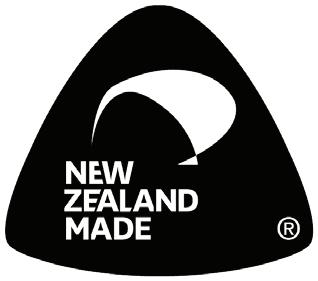
Covid-19
Thankfully for Drying Solutions, the effects of the Covid-19 pandemic were a lot less damaging, as they were constructing units for a petfood company, which was considered an essential business, during the spread of the virus.
However, it hasn’t been all smooth sailing for them. For instance, they’ve had delays in getting parts, with NZ suppliers facing their own challenges.
The business has been completely self-funded which
It’s proud of the hands-on support it can provide to customers in the form of availability of help, technical support and programming to fit customer requirements.

Drying Solutions is also able to continue developing several versions of the Rexmoi® Dryer and associated equipment. It has worked with a client on developing a hot box that repacks emergency slides, and for another client they’ve successfully developed a cooling tunnel

25 www.nzmanufacturer.co.nz / NZ Manufacturer December 2022
Buy NZ Looking for a marketing edge? 70% of licence holders say signing on has positively affected sales.
When McKinsey Comes to Town
-Walt Bogdanich and Michael Forsythe
McKinsey & Company is the most prestigious consulting company in the world, earning billions of dollars in fees from major corporations and governments who turn to it to maximize their profits and enhance efficiency.
McKinsey’s vaunted statement of values asserts that its role is to make the world a better place, and its reputation for excellence and discretion attracts top talent from universities around the world. But what does it actually do?
In When McKinsey Comes to Town, two prizewinning investigative journalists have written a portrait of the company sharply at odds with its public image. Often McKinsey’s advice boils down to major cost-cutting, including layoffs and maintenance reductions, to drive up short-term profits, thereby boosting a company’s stock price and the wealth of its executives who hire it, at the expense of workers and safety measures.
McKinsey collects millions of dollars advising government agencies that also regulate McKinsey’s corporate clients. And the firm frequently advises competitors in the same industries, but denies that this presents any conflict of interest.
In one telling example, McKinsey advised a Chinese engineering company allied with the communist government which constructed artificial islands, now used as staging grounds for the Chinese Navy—while at the same time taking tens of millions of dollars from the Pentagon, whose chief aim is to counter Chinese aggression.
Shielded by NDAs, McKinsey has escaped public scrutiny despite its role in advising tobacco and vaping companies, purveyors of opioids, repressive governments, and oil companies.
McKinsey helped insurance companies’ boost their profits by making it incredibly difficult for accident victims to get payments; worked its U.S. government contacts to let Wall Street firms evade scrutiny;
enabled corruption in developing countries such as South Africa; undermined health-care programs in states across the country. And much more.
Bogdanich and Forsythe have penetrated the veil of secrecy surrounding McKinsey by conducting hundreds of interviews, obtaining tens of thousands of revelatory documents, and following rule #1 of investigative reporting: Follow the money.
When McKinsey Comes to Town is a landmark work that amounts to a devastating portrait of a firm whose work has often made the world more unequal, more corrupt, and more dangerous.

A deconstruction of a famed mogul’s harmful influence on American business
whom he sees as “the personification of American, alpha-male capitalism, a pin-striped conquistador with the spoils to prove it.”
Welch joined GE in 1960 after completing a doctorate in chemical engineering, soon rising through the company’s ranks. Notoriously “impatient, impulsive, and crass” as well as ambitious and energetic, when he took over as CEO, he lost no time inaugurating his vision—and that of economist Milton Friedman—of “maximising profits at the expense of all else.”
GE had been known as a caring company that gave its workers exceptional benefits. Welch shattered that reputation, enacting massive layoffs, carrying out extensive mergers and acquisitions, and turning GE into “a giant unregulated bank.”
When Welch ascended at GE, writes Gelles, “half of GE’s earnings came from businesses dating back to the Edison era: motors, wiring, and appliances. Yet Welch, an extremist in all he did, drastically overcorrected.”
Instead of trying to fix American manufacturing, he effectively abandoned it, and would soon start shuttering factories around the country and shipping jobs overseas.
His influence was far-reaching. By the time he retired, 16 public companies were run by men “who had studied at his knee.” However, remarked a Goldman Sachs board member, “they were just cost cutters. And you can’t cost-cut your way to prosperity.”
Gelles capably traces GE’s downfall from being the most valuable company in the world in 1993 to its begging for a bailout in 2008, and he exposes the many business titans who followed Welch’s strategies.

He sees hope, however, in the “handful of idealistic capitalists”—leading businesses such as Unilever, PayPal, Patagonia, and Seventh Generation—who consider their companies’ impacts on employees, the environment, and society.
A vigorous argument for a more humane capitalism.
The Chaos Machine: How Social Media Rewired Our Minds and Our World

New York Times reporter Max Fisher’s book is a scathing account of the manifold ills wrought by social media. He explores toxic misogyny, and amongst other examples, anti-Muslim hate speech in Myanmar proliferating on Facebook, the spread of anti-vaccine rhetoric during the pandemic, and efforts by Russia to interfere with U.S. elections. Fisher also breaks down the tactics used by social media companies to get users to spend more time
online, among them notifications that are meant to set off feel-good dopamine releases in the brain, a tactic similar to the “intermittent variable reinforcement” used by casinos.
There’s no shortage of books lamenting the evils of social media, but what’s impressive here is how Fisher brings it all together: the breadth of information, covering everything from the intricacies of engagement-boosting algorithms to theories of
sentimentalism, makes this a one-stop shop.
It’s a well-researched, damning picture of just what happens online.
NZ Manufacturer December 2022 / www.nzmanufacturer.co.nz 26
In ‘The Man Who Broke Capitalism’, David Gelles, “Corner Office” columnist for the New York Times, focuses on Jack Welch, CEO of GE from 1981 to 2001,
Books
The Circular Economy
The Circular Transition Tool
 -Louise Nash, CEO & Founder, Circularity
-Louise Nash, CEO & Founder, Circularity
How does this tool work?
Today less than 10% of our world is circular. The way we are currently using materials is one of the primary drivers of climate change, generating 45% of our global emissions across three categories: food, construction and agriculture (Source: The Ellen MacArthur Foundation).
Over the last five decades, the global extraction of materials has more than tripled, from 26.7 billion tonnes in 1970, to 92.1 billion tonnes in 2017 (Source: Circle Economy).
Shifting away from the take-make-waste model to the circular economy can unlock this 90% linear opportunity. Circular business models drastically reduce our dependence on minerals, fossil fuels, metals and biomass.
And has the potential to eliminate the 22.8 billion tonnes of annual emissions associated with creating new products and reducing 39% of global GHG emissions.
This is an economic opportunity for businesses. In Auckland alone, the circular economy could unlock $8.8 billion of new value. Making the shift can benefit businesses by creating greater profitability and efficiency, reducing waste and its associated costs and unlocking greater innovation - which benefits internal and external stakeholder relationships.
While managers and CEO’s can often articulate the opportunity, making the shift to circular business models is where they most often encounter challenges.
Common barriers include not knowing where to start and lacking a decision making tool to support measurement, monitoring and engagement in current circular performance.
To help respond to these barriers, Circularity became the first company in New Zealand to be trained in the implementation of the Circular Transition Indicator (CTI), which enables us to help businesses assess linear risks and circular opportunities in their products, business models and supply chains.
By using the CTI tool, Circularity can provide businesses with a common language to measure and monitor your circular performance and support internal decision making, assessing the circularity of materials, energy and water, using information on the circularity of inflows and outflows of your system.

Is the tool software or an app or in-person?
The Circular Transition Indicator is a globally accepted tool provided as a software. It was developed by Circular IQ in partnership with the World Business Council for Sustainable Development, with over 1,970 companies in 94 countries now using it globally.
We use it to guide businesses through a circular measurement framework, using the tool to determine boundary and scope of the work and then embarking on coaching sessions to support data sourcing, calculating circularity scores and then working through the results to create personalised solutions.
Where do you obtain evidence?
Circularity’s assessment framework uses CTI to put circular economy theory into practice by:
1. Assessing the circularity of material, energy and water flows, drawing evidence directly from internal measurement, as well as regional, national and industry data and reports
2. Identifying linear risks and circular opportunities of materials, packaging, energy and water.
3. Applying our circular by design methodologies to design out or solve linear risks.
4. Validating the shift from linear to circular.
5. Informing business decision making and validating circular solutions.
How do you measure environmental impacts?
The step-by-step process outlines how a business can use the insights for key strategic decisions as well as reporting targets and objectives.
Once the measurement process is complete, we guide businesses through the process of prototyping, testing and ultimately implementing the circular solutions.
Could you give a few examples?
Circularity used the Circular Transition Indicator tool to assess and validate the circular flows of packaging materials and systems at Profile Group, the leading manufacturer of aluminium windows and doors in New Zealand, to assess the baseline circularity of packaging for APL Window Solutions and assess the impact of potential circular solutions.
Circularity supported Profile Group by applying the most important insights from the CTI Tool report into the redesign of their systems and materials as well as designing new packaging products to suit their products.
It was possible to understand what was driving Profile Group’s current circularity score at different stages, make data-driven recommendations, and create opportunities for improvements.
The insights from the tool have informed an action plan to enable the group to achieve close to 90%
circularity for packaging materials by 2025 from a starting point of 64%.
As a result of working through Circularity’s circular measurement framework process, a waste audit uncovered the reality that the amount of single-use plastic wrap used each year to protect Profile Group products in transit was enough to cover 25 percent of the circumference surface of the planet, and it was all going to landfill after use.
“This was a terrifying discovery and the catalyst to push us to redesign our packaging system to be circular, using the CTI tool to test and prove success”, explains Mikayla Plaw, Executive Director and GM of Organisational Development and Sustainability for Profile Group.
“What we found was that the overall circularity of these materials could go from 64% to 90%. And we are just getting started — our ambition is to completely redesign the impacts of our packaging systems to be regenerative, circular, and climate positive by 2025.”
This includes working with Circularity to design and introduce reusable, renewable packaging made from wool sourced locally, and reusable pallet cleats.
Profile Group now has a plan to reduce waste to landfill by 50% and repurpose 90% of organic waste as compost.
“I think the biggest challenge for us was measurability and being able to show to our employees that the work that they were doing to drive positive change was helping – a way of measuring and raising the standards of success,” adds Plaw.

The Circular Transition Indicator tool can assess the circularity of materials, resources, water and energy.
Source: CircularIQ
27 www.nzmanufacturer.co.nz / NZ Manufacturer December 2022
Manufacturers use SD-WAN to find their feet on Industry 4.0
Oshadha Ranaweera, Manager for Connectivity and Network Services at Somerville.

It’s been a long road to embed digital into factory operations, and it will take a concerted effort around connectivity upgrades to really set the sector on the right track.
While local momentum for the fourth industrial revolution - Industry 4.0 - has been building for some time, it gained in stature in 2022 as the trend was formally recognised at a federal level.
“Manufacturing worldwide has entered a period of transformation. The rapid development of computing power and internet connectivity are changing what is being manufactured and how that manufacturing is done,” a senate committee said earlier this year.
“While this may very well be disruptive, it generates new opportunities for industry. There does, however, appear to be much further work to do as this fourth industrial revolution is still in its relative infancy.”
Australasian manufacturers hoping to move down the path of Industry 4.0 face some headwinds to progress and to raising their level of maturity.
While it is recognised that manufacturers will ultimately move down this path, Industry 4.0 must currently battle for a slice of manufacturers’ mindsets. Innovations in design and manufacturing techniques – part of the Industry 4.0 era – share space with more immediate challenges such as supply chain disruption, labour shortages, and shifting consumer preferences.
Transformation may ultimately help to solve some of these challenges in the mid-to-longer term but manufacturers will need to stay the course and continue to allocate time to innovative endeavours if they are to succeed. There is evidence that digital technology is starting to win the war for attention. Research by CommBank shows 72% of manufacturers accelerated digital transformation efforts since 2020, and 74% will increase their investment in technology in the 12 months to March 2023. However, those investments aren’t necessarily on foundational technology elements that
would pave the way for Industry 4.0 initiatives. The CommBank research found “mobile, connectivity and internet of things” investment is lagging more traditional domains like process control and supply chain logistics.
That could pose an issue: as the Australian parliamentary committee highlighted, “Connectivity and the ability to share data is at the centre of Industry 4.0, as it provides accurate real-time information and flexibility to the manufacturing sector. Utilising connectivity is the key to developing automation, robotics, virtual and reality, Blockchain, and other Industry 4.0 capabilities.
“Without connectivity, data could not be fully exploited and only by increasing connectivity will nations and industry be able to harness the opportunities that Industry 4.0 offers.”
As the Industrial Internet of Things makes inroads into all areas of industry, factories will need to modernise their network architectures as a foundational element for future success. For most, this will mean updating their existing wide area network (WAN) - the infrastructure that connects all their operations and offices - with newer SD-WAN technology.
Manufacturers need to ensure that operations can be networked if they are to take advantage of more advanced Industry 4.0 activities and use cases, such as those involving artificial intelligence and advanced robotics.
Powered by SD-WAN IDC has called SD-WAN the “backbone of digital transformation.” The research firm lauds SD-WAN’s ability to address key transformation blockers, including performance and latency issues, multi-cloud environments, deployment of new services, resolving legacy network infrastructure bottlenecks, and avoiding interoperability issues while maintaining and enhancing security.
In a manufacturing context, SD-WAN can prioritise applications that machinery depends on even as data volumes from IoT devices increase and cloud adoption grows. It affords manufacturers options in the way they connect machinery to IT systems that can then generate insights and options for productivity enhancement or improvement.
The technology can help manufacturers to deploy new sites quickly and to reduce network equipment sprawl. As manufacturers expand their operations and integrate thirdparty vendors, they must grow their network accordingly. SD-WAN makes this possible in far less time than traditional WAN technology like MPLS, extending functionality to laptops and devices with no need to have experienced IT people on site for the installation.
SD-WAN further provides resilience for manufacturers that have digitised their operating environments by allowing for redundant connectivity. This ensures that if one mode of connectivity has issues, that it does not interrupt the flow of data, nor does it adversely impact Industry 4.0 efforts.
In addition, adding Zero Trust segmentation helps ensure the security of critical applications and devices by enforcing access and security policies. This is vital since IoT devices are traditionally difficult to secure as they usually cannot host a security agent and often lack authentication systems.
Add to this the convergence of IT and OT (operational technology), dramatically increasing cybersecurity risks, and it is important that manufacturers can pursue digital transformation and Industry 4.0 initiatives in a safe, secure way. It is not just emerging technology use cases and future directions such as Industry 4.0 that are enabled with SD-WAN; enhanced connectivity also underpins more traditional operations. Better connectivity, for example, can accelerate transmission of large files such as engineering CAD files and regular backups for disaster recovery without latency.
NZ Manufacturer December 2022 / www.nzmanufacturer.co.nz 28 The Last Word
Asia Manufacturing News features on the Feedspot Top 70 list of best industrial media platforms around the world. Success Through Innovation asiamanufacturingnewstoday.com ASIA M ANUFACTURING N EWS
SUCCESS Manufacturers focused on




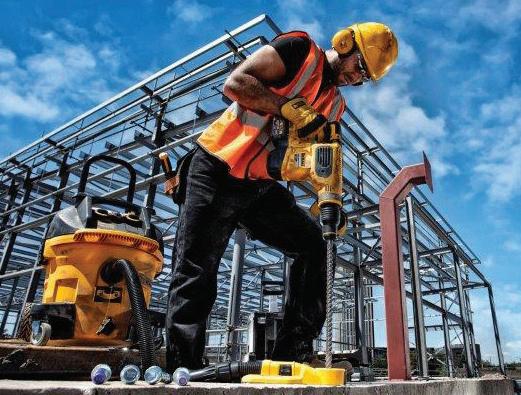


www.nzmanufacturer.co.nz / NZ Manufacturer December 2022 Join with...

























































































































